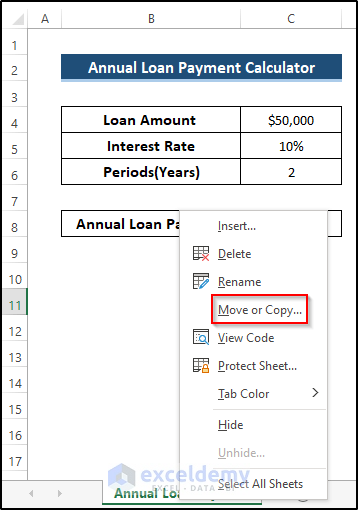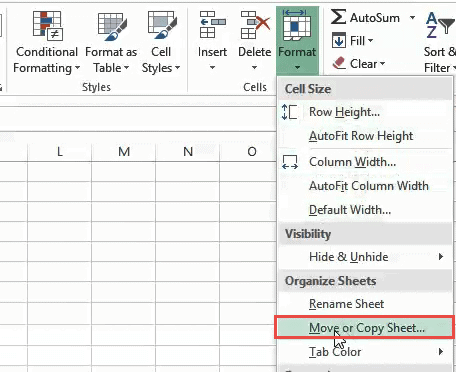5 Ways to Quickly Duplicate Excel Sheet Tabs

Whether you're managing a financial model, organizing a project plan, or sorting through data analysis, Microsoft Excel remains a quintessential tool for productivity in the business world. One of the frequently encountered tasks in Excel is the need to duplicate or copy a worksheet. Duplicating an Excel sheet can save time, ensure data consistency, and help in comparative analysis across different sheets. Here, we'll explore five ways to duplicate Excel sheet tabs efficiently.
1. Using the Drag-and-Drop Method

The simplest way to duplicate an Excel worksheet is through the drag-and-drop method.
- Hold down the CTRL key on your keyboard.
- Click on the tab of the sheet you want to duplicate.
- Drag the tab away from its current position while still holding the CTRL key.
- Release when a small black triangle appears on the tab strip, indicating where the copy will be placed.
💡 Note: Make sure the tab sheet isn’t already highlighted. If it is, click anywhere else first to unselect it before you start the dragging process.
2. Right-click and Copy

If you prefer using the mouse context menu:
- Right-click the tab you wish to copy.
- From the dropdown menu, select ‘Move or Copy…’
- In the dialog box, choose where you want to place the new sheet.
- Check the box labeled ‘Create a copy’ and click ‘OK’.
This method is straightforward and provides precise control over the position of the new sheet.
3. Excel’s Ribbon: Move or Copy Sheet

Excel’s ribbon offers another avenue to duplicate sheets:
- Go to the ‘Home’ tab on the ribbon.
- In the ‘Cells’ group, click on the arrow next to ‘Format’.
- From the drop-down, choose ‘Move or Copy Sheet…’
- Follow steps similar to the right-click method to complete the duplication.
4. Keyboard Shortcuts

For those who favor keyboard commands:
- Press Alt + E, then M to open the Move or Copy dialog box.
- Use the arrow keys to select the destination for your new sheet.
- Enable the ‘Create a copy’ option by pressing the Tab key until it’s highlighted, then press Space to check it.
- Press Enter to confirm the copy action.
5. VBA Macro

For repetitive tasks or to streamline your workflow, consider using a VBA macro:
- Press Alt + F11 to open the Visual Basic Editor.
- Insert a new module (Insert > Module).
- Copy and paste the following VBA code:
Sub CopySheet() Dim ws As Worksheet Set ws = ActiveSheet ws.Copy After:=ThisWorkbook.Sheets(ThisWorkbook.Sheets.Count) End Sub - Close the VBA editor and run the macro from Excel by pressing Alt + F8, selecting the macro name, and clicking ‘Run’.
This method is particularly useful for large datasets or when you need to duplicate sheets frequently.
Each method has its merits:
- Drag-and-Drop is quick for ad-hoc tasks.
- Right-click provides more control over placement.
- The Ribbon option is straightforward for occasional users.
- Keyboard Shortcuts offer speed for frequent operations.
- VBA Macros automate the process for bulk tasks or custom workflows.
To wrap up, duplicating Excel sheets is a common task that can be approached in various ways, each catering to different user needs and scenarios. Whether you're performing quick duplication for immediate analysis or setting up a system to automate repeated tasks, understanding these techniques will significantly boost your Excel productivity. Mastery of these methods will empower you to work smarter, not harder, in Excel, ultimately saving time and reducing the potential for manual errors.
Can I duplicate multiple sheets at once?

+
Yes, you can duplicate multiple sheets by selecting them before using any of the described methods. Simply click on one sheet tab, hold down the Shift key, and click on another tab to select a group. However, for bulk duplication, especially when dealing with VBA macros, you might need to adjust the macro code to handle multiple sheets.
What happens to cell references when duplicating a sheet?

+
Cell references within the duplicated sheet will typically point to the original data on the original sheet. If you want to ensure independence, you’ll need to manually change these references or use a macro to adjust them automatically.
Is it possible to rename the duplicated sheet automatically?

+
Using a VBA macro, you can rename the sheet either during the duplication process or right after. However, built-in Excel methods don’t provide an automatic renaming option, so manual intervention would be necessary if renaming is required.
How can I prevent duplication from affecting links or formulas?

+
While duplicating sheets, ensure that any formulas or links are pointing to cell references on the same sheet rather than external links or other sheets. If you need to retain external references, update them manually after duplication or write a macro to handle such updates.
Will data validation and conditional formatting be copied?

+
Yes, when you duplicate a sheet using any of the described methods, data validation rules, conditional formatting, and any other formatting or styling will be copied to the new sheet as well.



